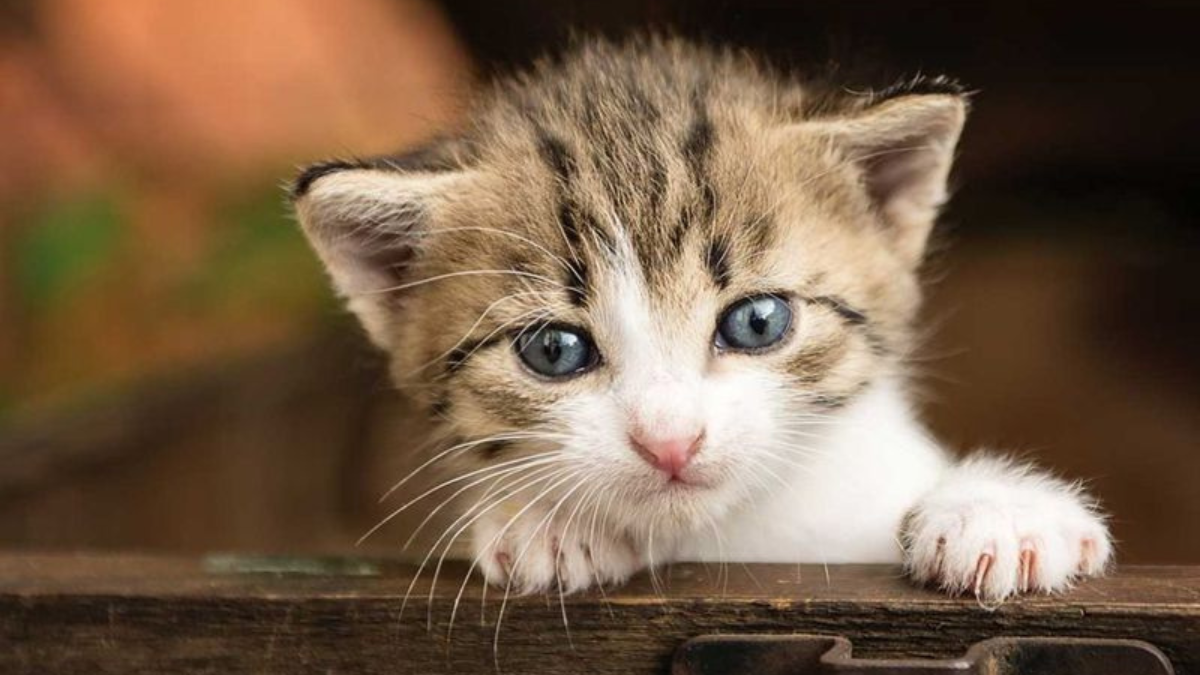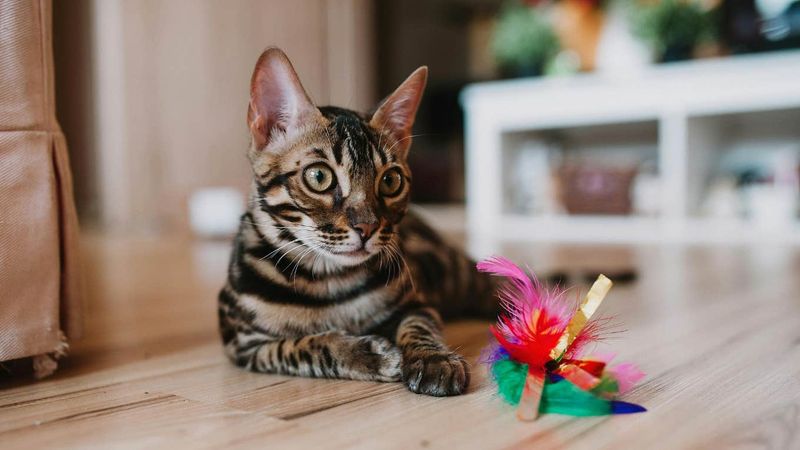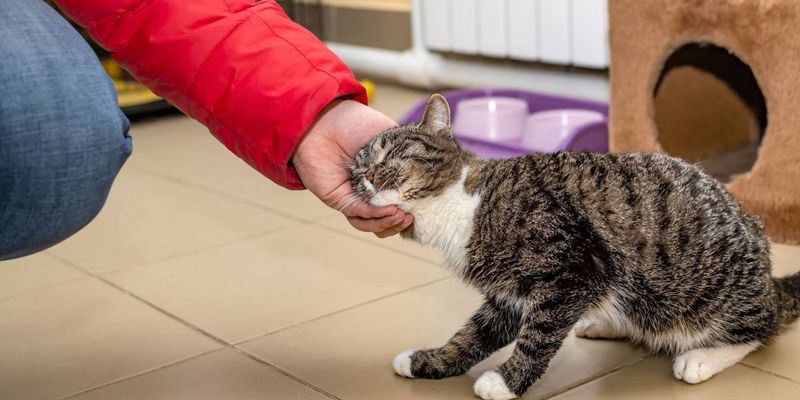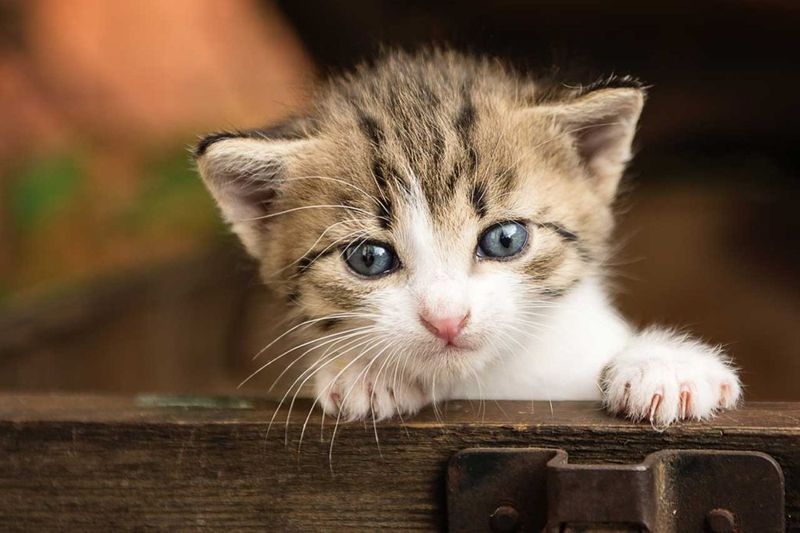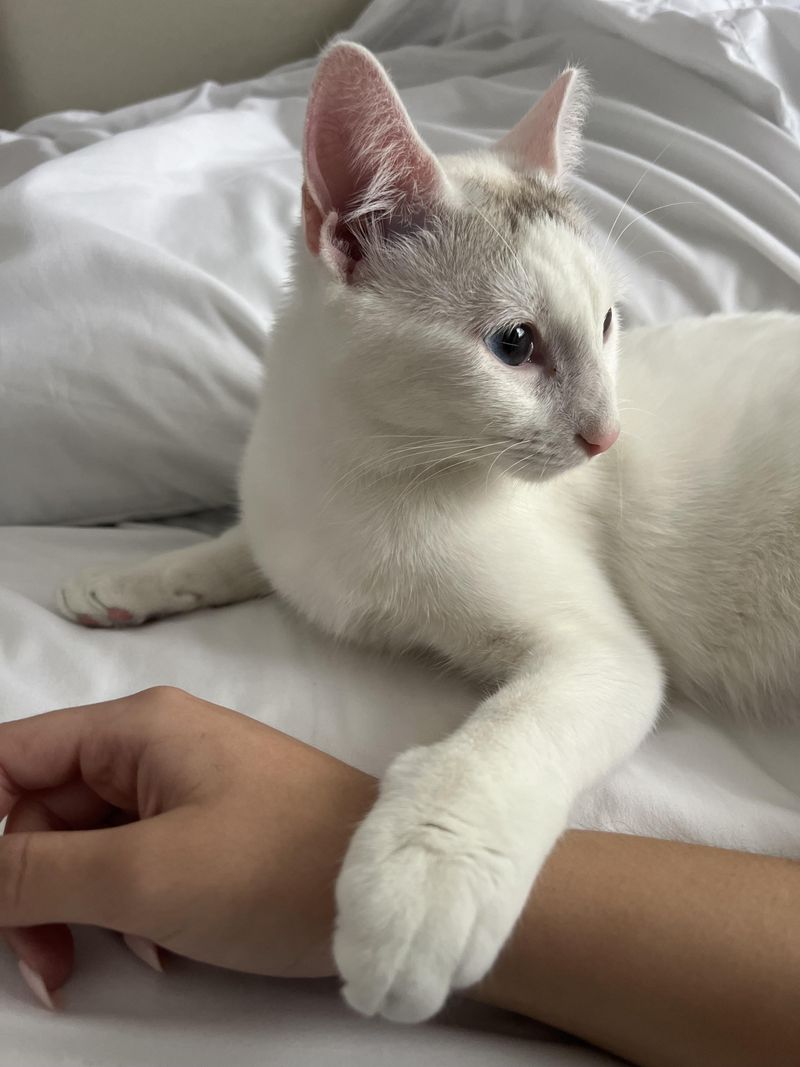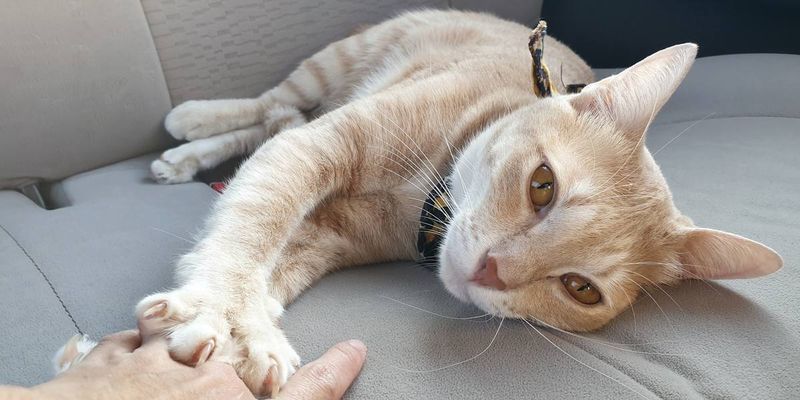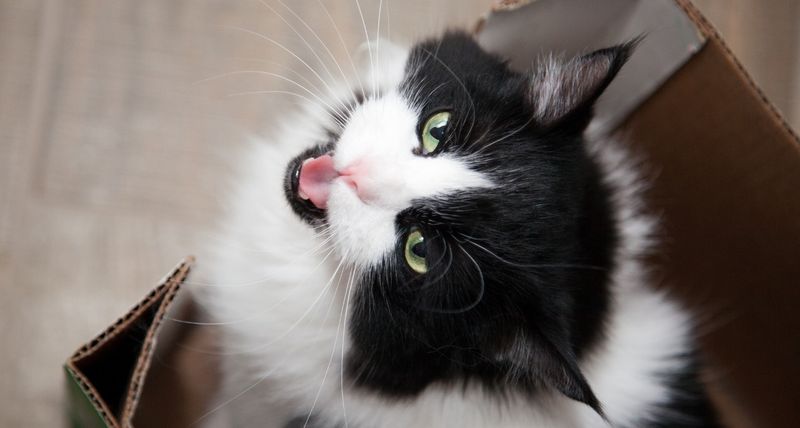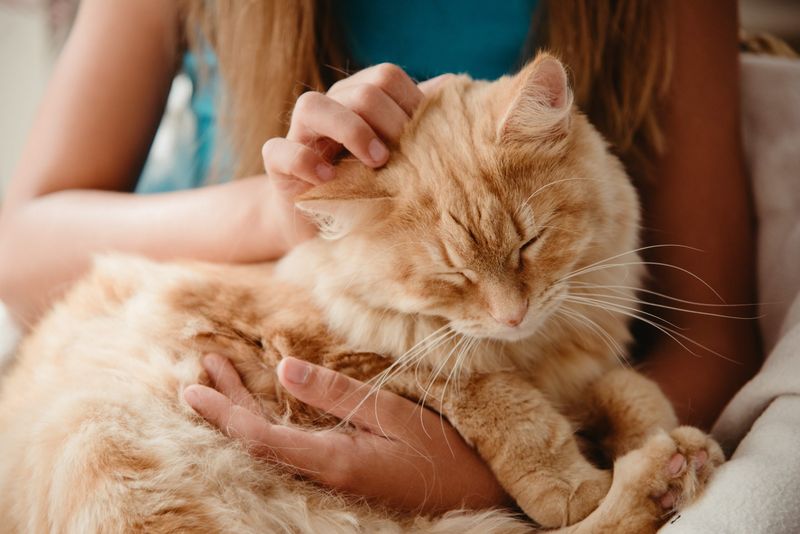📖 Table of Content:
- 1. Slow Blinking During Eye Contact
- 2. Bringing You Their Favorite Toy
- 3. Head-Butting Your Hand or Leg
- 4. Exposed Belly Flash
- 5. Sitting Nearby Without Touching
- 6. Grooming Your Hair or Hand
- 7. Purring While Making Biscuits
- 8. Synchronized Napping Near You
- 9. Following You Between Rooms
- 10. Chirping or Trilling Sounds
- 11. Presenting Their Back For Scratches
Cats are often thought to hold grudges, but their emotional world is more nuanced than it seems. While they may react strongly to stress or sudden changes, they’re also capable of rebuilding trust over time. Forgiveness in cats doesn’t come with fanfare, but with quiet, meaningful actions.
When a cat begins to forgive, it shows in small shifts—lingering nearby, soft vocalizations, or a slow blink. These gestures may seem minor, yet they carry a powerful message of peace and acceptance. Recognizing them can help repair a disrupted connection and restore comfort in the relationship.
Earning back a cat’s trust requires patience and consistency. Gentle interactions and respecting their space allow them to feel safe again. Over time, these efforts often lead to a deeper and more resilient bond.
1. Slow Blinking During Eye Contact
Caught your cat staring at you with half-closed eyes after you accidentally stepped on their tail? That slow blink is actually a peace offering! Cat behaviorists call this the “kitty kiss” – it’s a vulnerable gesture showing they trust you enough to temporarily close their eyes in your presence. Many cat parents miss this subtle sign of forgiveness.
When your cat slowly blinks at you after a disagreement, they’re essentially saying, “We’re good now.” Try returning the gesture by slowly blinking back. This non-verbal communication dates back to their wild ancestors, who used eye signals to defuse tension in their social groups.
2. Bringing You Their Favorite Toy
Your feline friend might drop their beloved catnip mouse at your feet as a peace offering. This gift-giving behavior isn’t just cute – it’s a meaningful gesture of reconciliation. Cats are natural hunters who share their bounty only with those they trust and respect. The toy delivery often happens within hours of a perceived slight.
Maybe you returned home late or accidentally scared them with the vacuum cleaner. Pay attention to the timing of these offerings. Unlike dogs, who might bring toys for play, cats are more selective with their gifts. A toy delivery, specifically after conflict, signals their desire to restore harmony.
3. Head-Butting Your Hand or Leg
That gentle bump against your leg isn’t just a bid for attention. Head-butting (technically called “bunting”) is your cat’s way of marking you with their scent glands after feeling slighted. They’re essentially reclaiming you as part of their territory. This behavior often follows minor transgressions like being ignored or receiving delayed meals.
The strength of the head-butt can indicate their forgiveness level – stronger bumps typically mean complete reconciliation. Some cats combine this with purring for maximum effect. The combination of scent-marking and positive sounds creates a powerful forgiveness ritual that strengthens your bond while helping them move past the offense.
4. Exposed Belly Flash
Rolling over to reveal that fuzzy tummy isn’t just adorable – it’s a profound display of trust after conflict. The belly is a cat’s most vulnerable area, housing vital organs with minimal protection. By exposing this region, your cat demonstrates they’ve forgiven your transgression. Contrary to popular belief, this isn’t always an invitation for belly rubs.
The gesture itself is the message: “I feel safe enough around you again to be vulnerable.” Some cats may allow brief stomach contact, while others prefer you simply acknowledge their peace offering. This behavior has evolutionary roots in feline conflict resolution, where showing vulnerability signals the end of aggressive standoffs.
5. Sitting Nearby Without Touching
Notice your previously upset cat quietly sitting a few feet away, seemingly ignoring you? This subtle positioning is actually a forgiveness milestone. Cats are masters of proximity communication – by choosing to be near without interaction, they’re rebuilding trust gradually. The exact distance matters in cat language.
A freshly forgiving feline might start at arm’s length, gradually decreasing the gap as their comfort returns. They maintain visual contact while processing their feelings about the incident. This behavior stems from their wild ancestry, where clan members would cautiously re-establish connections after conflict. Respect this space-conscious forgiveness by acknowledging their presence without forcing interaction.
6. Grooming Your Hair or Hand
When your cat starts licking your fingers or hair after you’ve wronged them, they’re offering more than just hygiene help. This grooming behavior is a powerful reconciliation gesture in the feline world. Cats only groom those they consider part of their inner circle. The sandpaper-like sensation of their tongue might not feel pleasant to us, but in cat society, mutual grooming is the ultimate bonding activity.
By including you in this ritual after conflict, they’re actively repairing the relationship. Some cats take this further by grooming themselves immediately after grooming you – a sign they’re reestablishing a shared scent profile, effectively saying “we belong together again.”
7. Purring While Making Biscuits
The rhythmic kneading motion cats make with their paws – affectionately called “making biscuits” – combined with purring, represents deep contentment. When this behavior follows a disagreement, it’s a clear sign they’ve moved past the incident.
This kneading action originates from kittenhood nursing behaviors. By reverting to this comforting ritual in your presence after conflict, they’re essentially regressing to their most vulnerable, trusting state. The added purring soundtrack amplifies the forgiveness message. Most cats display this behavior on soft surfaces like blankets or your lap. The choice to perform this intimate ritual near you signals they feel emotionally secure again in your presence.
8. Synchronized Napping Near You
Finding your previously offended cat suddenly asleep beside you carries special meaning. Sleep is when cats are most vulnerable, and choosing to doze off in your vicinity signals restored trust. Their sleep position offers additional clues about forgiveness levels. A curled-up cat maintaining some distance suggests partial forgiveness, while one stretched out completely indicates full reconciliation. The ultimate forgiveness posture?
Back-to-back sleeping, where they maintain physical contact while napping. This behavior evolved as a survival mechanism in wild cat colonies. By sleeping near trusted colony members, cats protected themselves from predators. Your forgiven status means you’re back to being considered safe.
9. Following You Between Rooms
The pitter-patter of paws trailing you from kitchen to bedroom might seem ordinary, but after conflict, this shadowing behavior speaks volumes. Your cat is actively choosing to maintain proximity despite their recent grievance. The following pattern often emerges within days of the offense as cats process their feelings. They monitor your movements while maintaining a safe distance, gradually closing the gap as forgiveness grows.
Some cats add conversational meows during this phase. Feline behavior experts note this surveillance serves multiple purposes – it satisfies their curiosity about your activities while reestablishing normal routines. By choosing to be your fuzzy shadow again, they’re signaling their willingness to resume regular relations.
10. Chirping or Trilling Sounds
Those distinctive bird-like chirps and musical trills aren’t just random cat noises. After tension between you, these specific vocalizations serve as verbal olive branches. Unlike standard meows, these sounds are exclusively reserved for positive social interactions. Mother cats use these same sounds to communicate with their kittens. By directing these gentle chirps toward you after conflict, your cat is reestablishing their affectionate connection.
The pitch and frequency often increase as forgiveness deepens. Each cat develops their unique forgiveness “song.” Some favor short staccato chirps while others prefer longer melodic trills. Learning your cat’s reconciliation sounds helps you recognize when they’re ready to move forward from disagreements.
11. Presenting Their Back For Scratches
When your cat positions their back or base of tail toward you after a disagreement, they’re extending a specific forgiveness invitation. This posture exposes nerve-rich areas they normally protect, indicating renewed trust in your touch. The significance lies in their body language during these scratch sessions. A forgiven human receives an arched back, slightly raised tail, and perhaps even happy feet-tipping.
These physical cues confirm you’re back in their good graces. Cats reserve this behavior for their most trusted companions. By offering their back for scratching after conflict, they’re essentially saying, “You have permission to touch me again.” This physical reconnection helps rebuild the tactile bond that may have been temporarily damaged.
